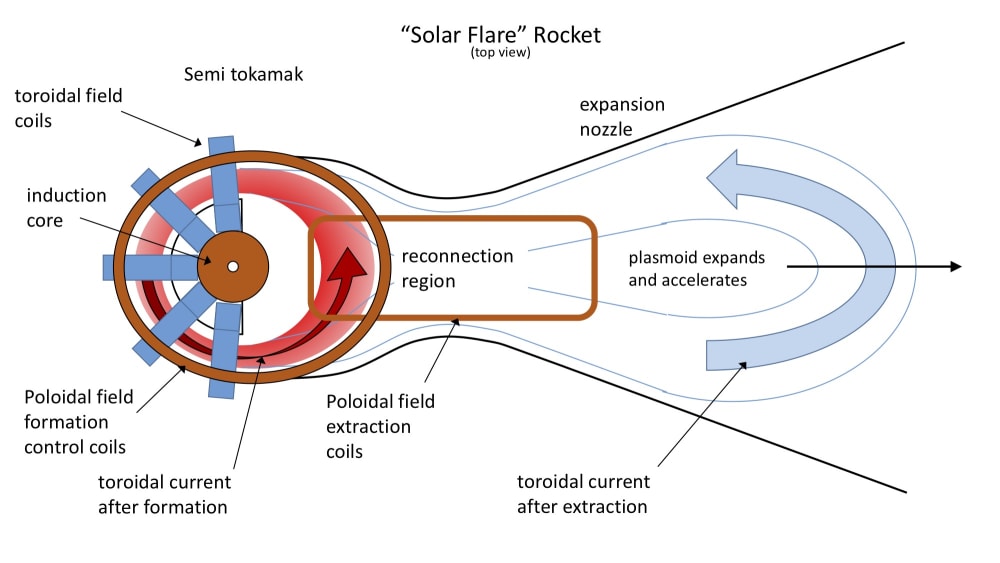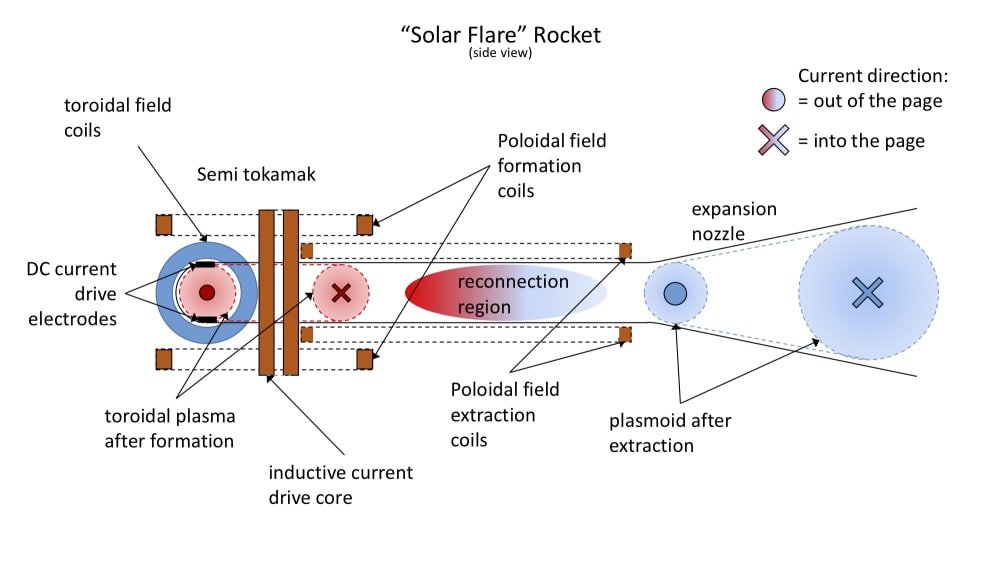A semi-tokamak geometry as shown in the accompanying illustrations forms a current carrying magnetized plasma loop. The current is generated either by means of induction or DC biased electrodes or a combination of both. After formation the loop deforms into the expansion nozzle either actively by means of JxB force from the extraction coils or passively when the formation current exceeds a stability threshold which is determined by the geometry and the strength of the formation region toroidal magnetic field. As the leading edge of the plasma loop enters into the expansion nozzle the rate of expansion must be sufficient to generate adequate force to prevent pull back of the plasma loop in order to allow time for reconnection to occur thus producing a separate plasmoid free to exit out the nozzle.
The primary advantage in this type of rocket is the high effective exhaust velocity which scales like the magnetic field strength divided by the mass density of the plasma. This speed is also easily changed by altering the admixture from which the plasma forms. Because the plasma temperature during formation need not be extremely hot, the admixture constituents will be predominately singly ionized thus the effective mass density of the plasma will scale as the average atomic mass of the formation mix. In this low temperature regime effective exhaust velocities ranging from 10,000 to 1,000,000 meters per second are likely and allowing for higher formation temperatures could make even relativistic exhaust velocities possible. To increase energy efficiency superconductors could be employed for the magnetic field coils and the expansion nozzle and much of the formation envelope but this is not necessary for a functional device.
The relative efficiency achievable with this approach compared to other plasma electric rockets along with the relative ease of achieving variable specific impulse and a capacity to handle high power make this rocket concept suitable for both manned and un-manned mission primary propulsion after orbit is achieved. On the other hand the broad range of size scales over which this design will work makes it suitable to replace all but the smaller range of other electrically powered thrusters.
Finally, the technology to assemble a prototype is all essentially available of the shelf and the plasma physics on which the operation of the rocket relies is reliably understood thus this concept provides a chance for a relatively short development cycle and near term impact on proposed missions to Mars and beyond.
Like this entry?
-
About the Entrant
- Name:John Thomas
- Type of entry:individual
- Patent status:none





